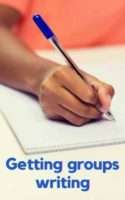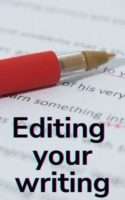Small children love being read aloud to. You see the expressions on their faces as they imagine the story – the fear, the excitement, the laughter! This is all excellent creative brainwork and a great foundation for reading.
But then once we can read ourselves we are not often read to. And actually it can be just as exciting as it is for children, and just as good for the creative side of our brains as we have to imagine what the words are describing, rather than seeing it on a screen. Which is like reading – and hearing a story is very similar to reading in many ways.
When you have a text to read aloud in a class or a group, there are various ways of handling it.
You can read it aloud yourself. If you are not a confident reader, or not sure about pronunciation, it is a good idea to practice beforehand. A reader can make or break a piece of writing – if they put expression into the direct speech, put good pauses in at dramatic moments – all this helps to bring the story alive. So if you enjoy reading aloud, and are a good reader, this is always a good option. (It doesn’t matter very much if a word or two is not pronounced properly – by you, or by one of the learners. The important thing is that learners understand the meaning of the whole text.)
It is also very good for weaker readers to follow in their books as a good reader reads the words. In this way learners get a feel for how sentences work, for how language works, for how to pronounce words.
This is also why you need to be careful with giving learners turns to read aloud. This can work well if you have good readers. But remember, the main educational thing that’s happening when a story is being read out is all the meaning that each listener is making – the pictures in their heads that they are creating, the work their brains are doing to understand the story. So when a weak reader stumbles and stutters through the words, it is very hard for the listeners to picture and enjoy the story. And it is not very educational either for the reader either – struggling nervously on words that don’t make much sense to you is not very helpful and may put you off reading altogether. So it is best not to force anyone to read aloud to a big group. And if you have keen but weak readers, don’t let them read too long – just a paragraph or two!
You could also get learners to sit in small groups of four or five to read. In this way there is less pressure on the less confident readers, but also ensures that everyone gets a turn. And even if there are weaker readers, it doesn’t seem to matter so much in a small, intimate group. If you choose this option it’s a good idea to walk around and listen, and even ask learners about what they are reading – are they enjoying it etc. The focus is on the story, so it is not a reading test in any way.
If you think a story is too long to read aloud, then you could even let learners find a comfortable spot and read some of it silently to themselves.
But don’t think that just because you are dealing with teens that they have grown out of being read to. Adults these days are listening to whole books on Audible, an app, rather than reading them. And a study in the UK found that high school teens – especially weaker readers – who had many stories read to them improved their academic performance – more so than those who read less but did more comprehensions and analysis. Time spent on reading – actual sustained reading – is a major factor in reading improvement. So we need to remember that reading is actually the focus – not the activities afterwards, which are really just there to ensure that learners are engaging with the text. And as one of the teachers in the study said: “In my experience, they hate reading for five minutes then doing a diary entry for 40 minutes…they just want to know the next bit of the story.”
So develop your acting skills and bring the words to life for your learners. The reading of the story is the most vital part of the session!




